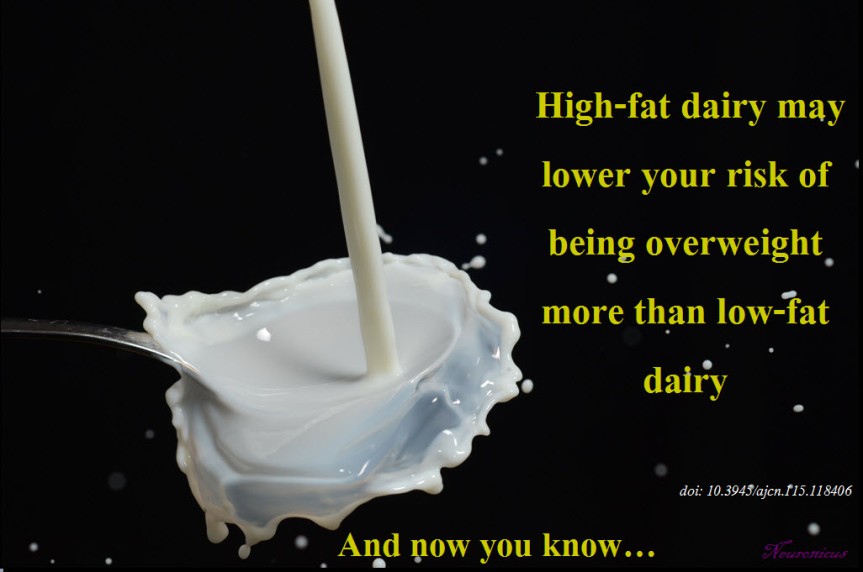Many people buy low-fat dairy, like 2% milk, in the hopes that ingesting less fat means that they will be less fattier.
Contrary to this popular belief, a new study found that consumption of high-fat dairy lowers the risk of weight gain by 8% in middle-aged and elderly women.
Rautiainen et al. (2016) studied 18 438 women over 45 years old who did not have cancer, diabetes or cardiovascular diseases. They collected data on the women’s weight, eating habits, smoking, alcohol use, physical activity, medical history, hormone use, and vitamin intake for 8 to 17 years. “Total dairy product intake was calculated by summing intake of low-fat dairy products (skim and low-fat milk, sherbet, yogurt, and cottage and ricotta cheeses) and high-fat dairy products (whole milk, cream, sour cream, ice cream, cream cheese, other cheese, and butter)” (p. 980).
At the beginning of the study, all women included in the analyses were normal weight.
Over the course of the study, all women gained some weight, probably as a result of normal aging.
Women who ate more dairy gained less weight than women who didn’t. This finding is due to the high-fat dairy intake; in other words, women who ate high-fat dairy gained less weight compared to the women who consumed low-fat dairy. Skimmed milk seemed to be the worst for weight gain compared to low-fat yogurt.
I did not notice any speculation as to why this may be the case, so I’ll offer one: maybe the people who eat high-fat dairy get more calories from the same amount of food so maybe they eat less overall.

Reference: Rautiainen S, Wang L, Lee IM, Manson JE, Buring JE, & Sesso HD (Apr 2016, Epub 24 Feb 2016). Dairy consumption in association with weight change and risk of becoming overweight or obese in middle-aged and older women: a prospective cohort study. The American Journal of Clinical Nutrition, 103(4): 979-988. doi: 10.3945/ajcn.115.118406. Article | FREE FULLTEXT PDF | SuppData
By Neuronicus, 7 April 2016



